Many an unnecessary fight has broken out over the use of photographs for drawing, with a snobbish minority who would rebuke any woman or man who dared work from a photograph and call their piece art, but moving away from the purist views, most artists see the good in both working from life and working from photographs.
As a beginner, most work is carried out in the safety of the home because working outdoors might mean attracting unwanted attention, and whether a beginner or advanced artist, attention is usually the last thing that is wanted (unless my bias speaks more for myself?!) If the prospect of being seen is problematic, consider drawing in your backgarden if you have one, a remote area of countryside, or something from inside the home; you'll soon gain your own insights into the differences of working from life and from a photographic source.
With experience from both, it is possible to work from photographs without it being overtly obvious, but it is worth trying both, if nothing more than for the sake of comparison.
Limitations of Photographs
The first most obvious limitation of a photograph is that it is fixed, and whilst you can crop a section of the picture to better your composition, you do not have the periphery vision to pick and choose as you might from life.
The sharpness and detail caught by photographs is an advantage and disadvantage. Photo-realists strive to perfectly copy a photograph, but only the very best photo-realists supercede a photograph and with the countless hours of work, quite frankly if your drawing looks almost identical to a photograph, why not keep the photo and make better use of your short time? There is a danger in focusing too much on the details in a photograph and then finding your drawings are taking days if not weeks to complete; some people enjoy losing themselves in this work, which is great, but for others a piece of work can become boring, tedious and sterile.
It is quite useful to squint at your photographs and simplify what you see in terms of value (graduations of black and white), and then if there are areas in your drawing that you want to give a selective focus, you can pursue the details in the photograph to aid your progression in a particular area of the composition.
As we are not dealing with colour there is no need to fret about the terrible things photographs can do there, but even without colour, problems can arise. Two of the most common problems when taking snapshots is in the light exposure - either capturing the sky at the cost of plunging your area of interest into darkness - the bottom left photo of New York's Flatiron building was taken at the wrong time of day. When possible it is advisable not to take photographs pointed towards a strong source of light such as the sun. The second most common problem is bleaching the sky where the lens focuses on the light and detail of the ground, at the cost of washing out the sky, such as the bottom right photograph of Central Park.
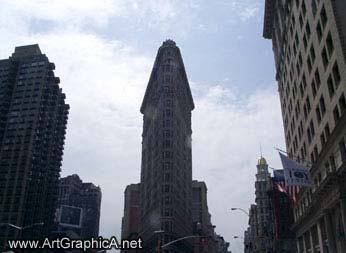
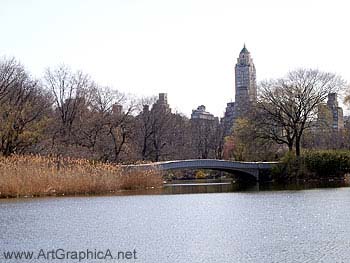
Although sometimes subtle, the curvature of a lens distorts objects. It is most noticeable in architecture or photographing objects close up.
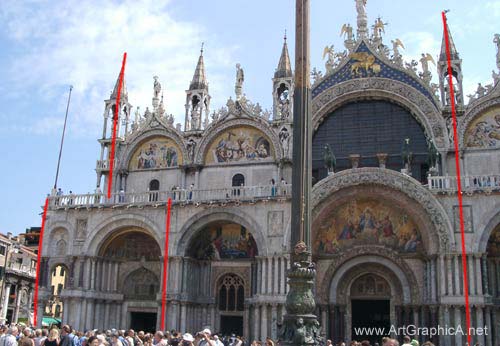
Benefits of Photographs
Photographic sources are easily the most practical to work from, and with the advent of digital cameras you can just click away to your heart's content and choose your favourite compositions. If you have a computer, a digital camera or scanner and some graphic software, it is extremely easy to transform your work into a monotone image, and if necessary lighten any shadows that have come out too dark. If you have no choice but to work from a colour photograph, values are most easily seen by squinting your eyes. It should become fairly apparent which areas are the lightest, which are the darkest, and which values lay in between.
One of the better functions of photographs is capturing dynamic movement, be it cloud, water, people, or particularly fast moving objects such as birds or cars. Before the camera was in popular use, there was a particular issue in painting the accuracy of such animals as a horse in motion for obvious reasons.
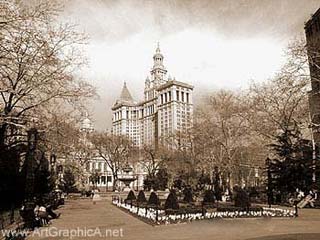
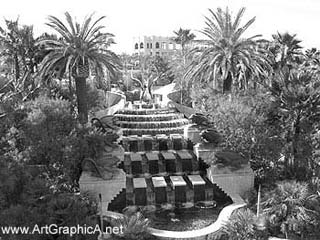
Limitations of Life Drawing
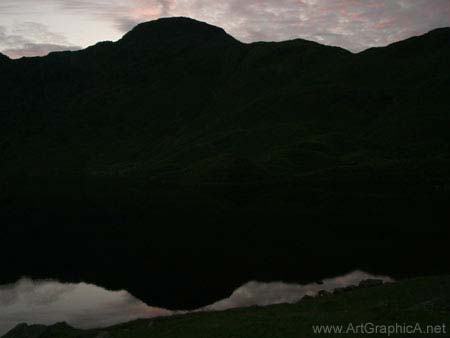
One of my first life drawings was produced late one evening in Grasmere, Cumbria. It was nine o'clock in the evening, but being summer the gloaming still lingered. I clambered up a fell following the path of a waterfall as the moon began to show, and found my way to a tarn. I had brought along my pad, ink and brush, but had forgotten my water and so filled up the well of my palette with tarn water and began to sketch the watery expanse with adjacent lakeland fells. Through the serene, still twilight I had forgotten about the midges who were eager to dine and so came by the dozen to feast on my face and hands. Stubbornly I ignored them and finished my sketch to awake in the morning looking like a pepperoni pizza!
Since that time there have been a number of occasions where I have sat down outside to draw, and have been driven to complete distraction by flies, having to abandon what I sat out to sketch. There have been occasions when the sun has reflected so badly off the brilliant white of my paper, that I have been left with the mild symptoms of snow blindness and other times where my hands have seized up through the cold. There is also of course, the frustrations of changing shadows, and a sun that likes to play hide and seek with the clouds. In the right conditions there is nothing better than to sit outside and draw, but when the conditions are wrong, it can be more than a little frustrating.
Benefits of Life Drawing
A camera may record much detail not seen by the eye, but without a human mind to support it, it can make none of the interpretations of direct observation. A moment of naturalistic beauty may make the blandest of photographs which in turn may provide no inspiration for drawing. The largest benefit and motivating factor from working directly from life is the emotional attachment that not only connects the person with the scene, but the resurrection of this connection when looking at the sketch or drawing produced there. Wordsworth's most famous 'daffodil' poem, "we have no time to stand and stare...", could not be written about an artist. Although we do not need a dog as an excuse to take a lone walk, and we do not need a sketchpad to excuse ourselves for sitting down and really penetrating a scene for an hour or more, if we happen to have a sketchpad in hand the artist's observant eye can consume so much detail from a single viewpoint that it is nearly impossible to become bored.
Life drawing does not only embrace the clean air of countryside of course, it can involve studies made in city centres, or in rooms with live models. Although the camera may capture sharper details, the roving eye is much more attune to the three-dimensionality that lays before it, and can discern far more in terms of tonal value.
Tutorial is copyright of ArtGraphica